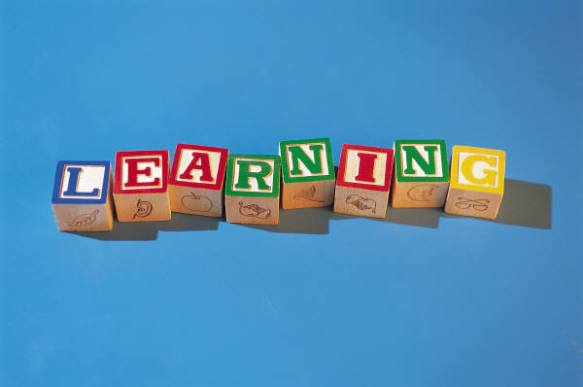by Neva Fenno, M.S.Ed., MLIS
At some time or another, it seems inevitable that you will be out of compliance in your classroom. This happens in especially bad economic times. Cities and towns become incapable of raising tax revenues to cover all costs and everything suffers. The number one reason you might have compliance issues is in maintaining a certain number of students in your care at any given time.
As referrals and approvals come in, administrators must find a suitable placement for a child. Sometimes there’s just no room at the inn, so they assign the child to your classroom until another solution becomes available.
There are some things you can do to try to start solving these problems, at least in your own domain, but first you need to understand the law.
I have a special fondness for Wrightslaw online. It’s a site that has every possible SPED law spelled out and explained in plain English. It also points people to other resources that may help solve problems with staying in compliance of IDEA, Public Law 94-142 laws. It links to advocacy groups, attorneys who specialize in this complex corner of the law, and provides access to advocacy and Special Education Law libraries (to-die-for resources).
I could spend weeks reading all the articles and papers on this site and never truly have a complete understanding of the laws for our special education students. I recommend surveying this site; it has a good search engine if you have specific questions about how to stay in compliance in your classroom.
 The numbers of students in your care is pretty basic. All the regulations adhere to a basic premise that we are providing the LRE (Least Restrictive Environment) for special ed. students. There is a legal definition of this concept, but we all know what it means. We need to include SPED students as much as possible in classrooms for all children. Students are no longer shuttled into a separate self-contained room or school and forgotten. There are still self-contained classes, but the rules around placement are very strict and must be followed to the letter.
The numbers of students in your care is pretty basic. All the regulations adhere to a basic premise that we are providing the LRE (Least Restrictive Environment) for special ed. students. There is a legal definition of this concept, but we all know what it means. We need to include SPED students as much as possible in classrooms for all children. Students are no longer shuttled into a separate self-contained room or school and forgotten. There are still self-contained classes, but the rules around placement are very strict and must be followed to the letter.
When I am out of compliance in student count, the first thing I do is look at the class list in its totality. Can I prioritize my class list? This sounds barbaric, but there are always students who may have been in SPED classrooms too long and it is in their best interests to have their IEPs changed with parent input. Graduating (phasing) a student out of SPED services is hard to do, so be prepared for a fight. People (parents) become happy with extra care situations for their children. I always work with district SPED officials and my school principal. I can be a squeaky wheel, and if I keep at it, students can be phased out of my classrooms. Call IEP meetings and review each situation thoroughly to try to keep your room in compliance.
In a resource room, you cannot exceed five students per instructor. There are also rules for paraprofessionals; can a child be assigned a personal aide (through the IEP and team meeting process)? We are all aware of situations when keeping it to five students is just not feasible and the student count in resource rooms swells to try to absorb the overflow. There can be acceptable temporary arrangements. Self-contained classrooms are generally eight students with a full time teacher and one paraprofessional.
You are probably questioning my numbers. Actually, so am I. As I tried to research this issue, I came across different guidelines in different states. The best description of these rules can be found on Wrightslaw:
Is There a Legal Definition of Self Contained Classroom?
There is no legal definition of “self-contained classroom” in the federal statute.
It is suggested that you defer to your state special education offices for guidance.
We all know a classroom that is out of compliance. We know what it looks like, how it’s not functioning and that we should do something about it when we can.
Some resources to help us all stay up to date:
IDEA 2004 (Individuals with Disabilities Education Act)
NASET – National Association of Special Ed Teachers
Teachervision – practical everyday things to use in your classroom.
Let us know if you have a class out of compliance and the plans you are developing to fix it.
Grant Name: Family Service Community Grants
Funded By: Autism Speaks
Description: Autism Speaks seeks to directly support the innovative work of autism service providers in local communities across the United States. The focus of our Family Services Community Grants is three-fold: to promote autism services that enhance the lives of those affected by autism; to expand the capacity to effectively serve this growing community; and to enhance the field of service providers.
Program Areas: After-School, Arts, Community Involvement/Volunteerism, Disabilities, Early Childhood, Family Services, General Education, Health/PE, Library, Math, Reading, Safe/Drug Free Schools, Science/Environmental, Social Studies, Special Education, STEM (Science, Technology, Engineering, Math), Technology, Vocational
Eligibility: Public School, Private School, Other
Proposal Deadline: 3/25/2015
Annual Total Amount: $5,000.00 – $25,000.00
Telephone: 917-475-5059
E-mail: sselkin@autismspeaks.org
Website: Autism Speaks
Availability: All States




